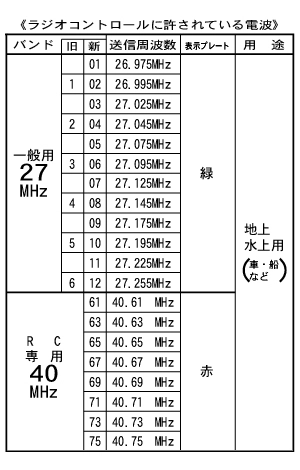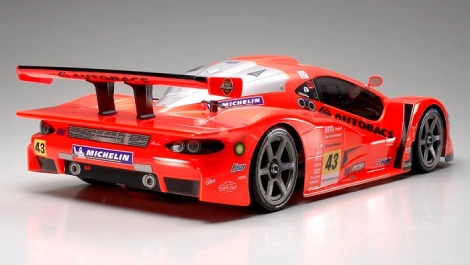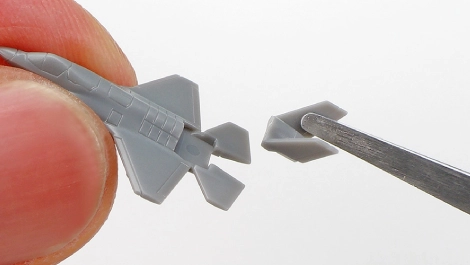Basic knowledge of RC systems - Tamiya RC Start Guide
RC system for electric RC cars
As the name suggests, RC cars are equipped with an RC (Radio Control) system for control. Hobby RC cars use a digital proportional system that allows for delicate control, and the RC system is also called a radio control set or radio control unit. Some RC models, such as Tamiya's XB series, come with a pre-built RC system, but with standard assembly kits, you will need to prepare your preferred RC system and attach it to the vehicle.
- Configuration and Functions of RC Car Propo Set
- Batteries for radio control
- Number of radio control channels = number of actions that can be controlled
- Radio waves used by RC cars
- 2.4GHz RC system that does not require crystal changes
- The band can be changed with a crystal (not required for 2.4G RC systems).

Configuration and Functions of RC Car Propo Set
Configuration and Functions of RC Car Propo Set
A typical radio control set consists of a transmitter for hand-operated control, and a receiver, servo, and speed controller that are built into the car or aircraft. There are various types of radio control sets for land, air, and sea, but electric RC cars use a type called a "2-channel radio control." Tamiya also offers a set called a "Drive Set" that includes all the RC systems necessary to run an RC car.
See a list of Tamiya's RC systems
Transmitter
The transmitter is a control box that sends control signals to the machine. For RC cars, the "wheeler type" that combines a pistol and a steering wheel is common, with the wheel part used for steering and a trigger-like lever used for forward and reverse operation. In addition, it is equipped with a "trim mechanism" that fine-tunes each operation, and a "reverse switch" that switches the servo's forward and reverse rotation depending on the servo's installation position, which differs from vehicle to vehicle. In addition, for RC other than car models, the "stick type" that is operated with two sticks is common. Some stick-type radios can perform various controls by combining the operation of two sticks, and stick-type radios may be used for RC cars that can perform operations such as shifting and turning lights on and off.
Receiver
The receiver receives the radio waves sent from the transmitter, extracts the signal, and transmits it to the servo or speed controller. In 27MHz and 40MHz RC systems, by installing "crystals" of the same band on both the transmitter and receiver, the radio bands of the transmitter and receiver are aligned, allowing them to send and receive control signals.
Servo A
servo has a built-in servo motor, and the direction, speed, and time of rotation are determined by control signals from the receiver, which move the servo horn. In a typical electric RC car, the servo horn is connected to the steering mechanism and is used to control the direction of travel.
Speed controller
The speed controller (also called a speed control amplifier, ESC, amplifier, etc.) converts the signal received by the receiver into voltage and controls the motor rotation speed (= machine speed). The motor rotation speed is controlled by the proportion of time electricity is sent from the speed controller. When driving at low speeds, the proportion of time electricity is sent is small, and the higher the speed, the more electricity is sent. At maximum speed, electricity is always sent. If you use a high-output motor, you will need a compatible speed controller. When upgrading your motor, check the specifications of your speed controller.
To adjust the speed of a typical gasoline car, a servo is used instead of a speed control amplifier (a total of two are used, one for steering and one for speed control). The speed control servo is connected to the engine throttle, and controls the engine throttle opening and braking effect.

1/10 RC Toyota Hilux High Lift Full Set (ITEM 57060)
A 4-channel stick radio is used to perform a variety of controls such as flashing lights and shifting gears.


Batteries for radio control
Transmitters generally use four AA batteries. It is recommended to use alkaline batteries, which provide stable output for a long period of time. In addition, it is common for electric RC cars to use the same battery for the receiver as for the car, so dry batteries for the receiver are not usually required.
Power Champ RS (ITEM 55117)
AA alkaline battery with enhanced heavy-load pulse discharge performance. Ideal for RC transmitters and receivers.
Number of radio control channels = number of actions that can be controlled
RC kits will specify the radio control set they use as a "2-channel radio control" or "4-channel, 3-servo radio control." The number of channels here refers to the number of actions that can be controlled simultaneously. RC cars generally use 2-channel radio controls, as all that is needed is control of speed (forward and reverse) and steering. There are also multi-channel radio controls with 6 or 8 channels, and these are used to operate RC cars with gear changes, or tanks that can perform actions such as turret rotation and firing.

Finespec 2.4G 4-channel radio control (transmitter and receiver set)

Radio waves used by RC cars
The types of radio waves currently approved for use in RC on land and water are shown in the table below. RC cars use two bands, 27MHz and 40MHz, which are further divided into smaller frequency bands. There are 20 bands that can be used by RC cars (see table), and up to 20 cars can run at the same time if each driver uses a different band of radio control. The 27MHz (megahertz) band of radio waves used by RC cars is also used for toy radio controls and walkie-talkies, and no registration or application is required for use. On the other hand, the 40MHz band is only for RC models, and if you use a 40MHz type radio control, you must register with the Japan Radio Controlled Radio Safety Association by paying the prescribed fee. This registration can be done at a model shop that acts as a registration agent.
- In recent years, RC systems using the 2.4GHz band, which does not require band adjustment, have become mainstream. All you need to do is perform the initial setup called pairing, and it will automatically select an available channel, and there is no need to change the crystal. In addition, 2.4GHz type radios can be used in conjunction with conventional 27MHz and 40MHz radios.
- The 27MHz band was previously divided into bands 1-6 (old bands), but is now subdivided into bands 01-12 (new bands). Bands 1-6 and 01-12 have the same or similar frequencies, making them prone to interference. Avoid using transmitters on both the old and new bands at the same time.

2.4GHz RC system that does not require crystal changes
Currently, Tamiya's RC system is mainly called "2.4GHz type". This is a radio control system that uses the 2.4GHz radio band, which is also familiar from wireless LAN, and its major advantage is that there is no need to check the band before use. It automatically selects an available channel by performing the initial setting called pairing, and there is no need to change the crystal. It is said that 2.4GHz type radio controls can run dozens of cars at the same time, and there is an example of 28 cars running at the same time in a Tamiya race. In addition, 2.4GHz type radio controls can be used in conjunction with conventional 27MHz and 40MHz radio controls, so more machines can run at the same time.

The band can be changed with a crystal (not required for 2.4G RC systems).
The transmitter and receiver's crystals determine the radio control band. In Hobby RC, you can change the crystals, so you can change the band by replacing them with ones of a different band. The crystals are marked as shown in the figure.
- Always change crystals in pairs
There are crystals for transmitters and crystals for receivers, and each has the same band number. When changing the crystals, if only one of the crystals has a different band number, you will not be able to control it. Also, there may be subtle differences depending on the manufacturer, so always pair the crystals for the transmitter and receiver with those of the same manufacturer as the radio you are using. - There are also restrictions on changing crystals
Crystals can only be changed within the 27MHz and 40MHz frequency bands, so you cannot swap crystals such as 01 in the 27MHz band and 61 in the 40MHz band. Also, there are AM and FM transmitters, which differ in how they send radio signals, but each uses its own dedicated crystal, so you cannot use a crystal for an FM transmitter with an AM transmitter, or vice versa.
Check the band to prevent interferenceRC
radio waves can reach up to 2 km in the air and 500 m on the ground. If someone is operating an RC nearby, be sure to check the band number. If the band numbers are the same, the radio waves will interfere with each other and the control will become impossible. Take turns operating the RC, or if you have crystals with different band numbers, change the band to prevent interference. If they are on the same band, AM and FM radios will also interfere with each other, and you should also be careful with walkie-talkies and toy RCs. If the 27MHz band is being used, hobby RC signals may interfere with toy RCs.
Loss of battery leads to no control
If the transmitter or receiver batteries are low, the machine will be out of control (no control). The remaining battery level of the transmitter can be checked using a meter, but the receiver does not have a meter, so be careful. If you are using a model that shares the driving battery with the receiver power source, stop driving as soon as the machine starts to slow down.





